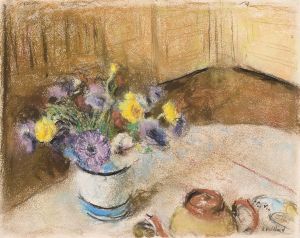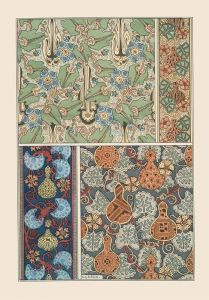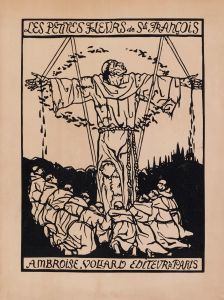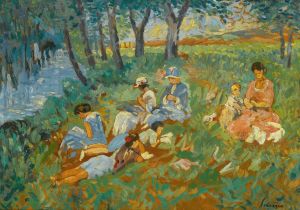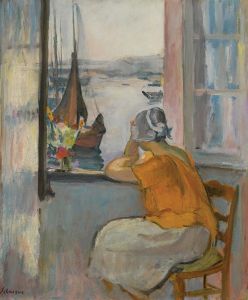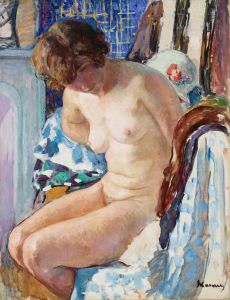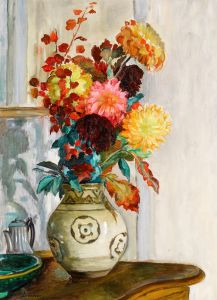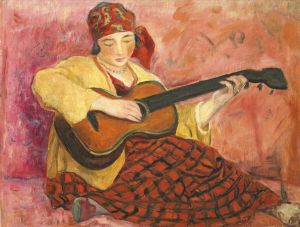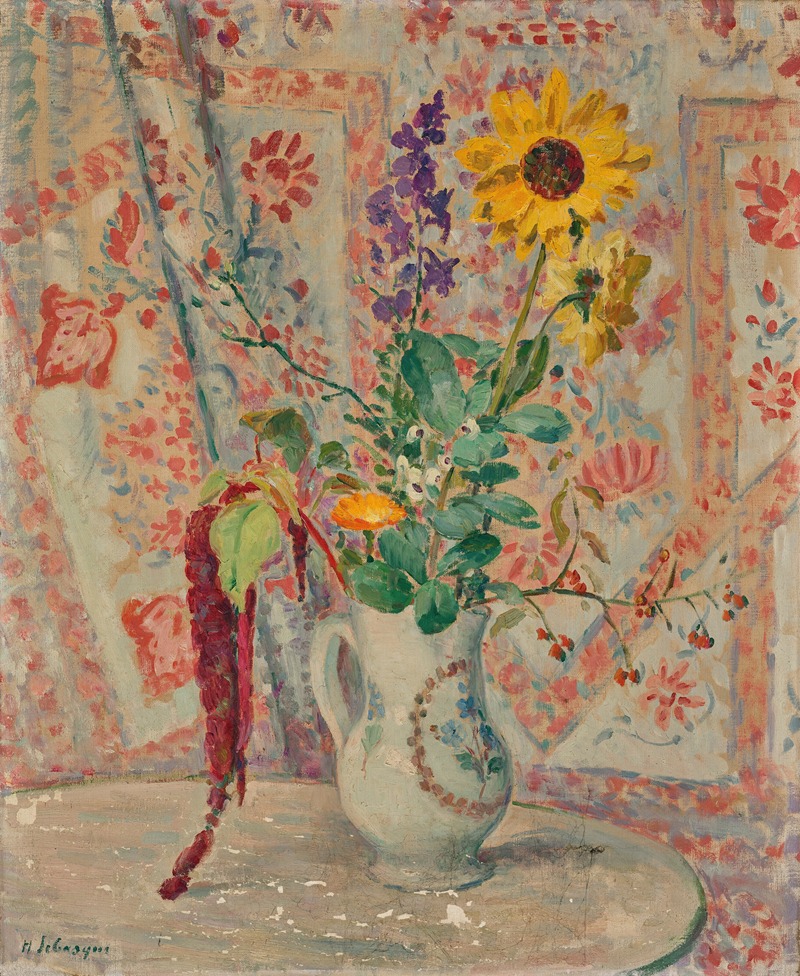
Nature morte au bouquet
A hand-painted replica of Henri Lebasque’s masterpiece Nature morte au bouquet, meticulously crafted by professional artists to capture the true essence of the original. Each piece is created with museum-quality canvas and rare mineral pigments, carefully painted by experienced artists with delicate brushstrokes and rich, layered colors to perfectly recreate the texture of the original artwork. Unlike machine-printed reproductions, this hand-painted version brings the painting to life, infused with the artist’s emotions and skill in every stroke. Whether for personal collection or home decoration, it instantly elevates the artistic atmosphere of any space.
Henri Lebasque was a French post-impressionist painter known for his vibrant use of color and light. Born on September 25, 1865, in Champigné, France, Lebasque developed a style that was characterized by a delicate balance between impressionism and the emerging modernist movements of the early 20th century. His works often depicted intimate domestic scenes, landscapes, and still lifes, capturing the essence of everyday life with a sense of warmth and tranquility.
"Nature morte au bouquet" is one of Lebasque's still life paintings, a genre that he frequently explored throughout his career. Although specific details about this particular painting are limited, it is representative of Lebasque's broader approach to still life compositions. His still lifes often feature carefully arranged objects, such as flowers, fruits, and household items, presented with a keen attention to color harmony and light effects.
Lebasque's technique involved the use of soft, fluid brushstrokes and a palette that favored pastel hues, lending his paintings a gentle, almost lyrical quality. This approach can be seen in "Nature morte au bouquet," where the interplay of light and shadow, along with the subtle gradations of color, create a sense of depth and dimension. The painting likely reflects Lebasque's interest in capturing the ephemeral beauty of natural objects, a theme that resonates throughout his body of work.
Throughout his career, Lebasque was associated with several influential art movements and groups. He was a founding member of the Salon d'Automne in 1903, an exhibition that provided a platform for avant-garde artists and played a crucial role in the development of modern art in France. Lebasque was also connected with the Nabis, a group of post-impressionist artists who emphasized the importance of color and symbolism in their work. Although not a formal member, his style shared affinities with their aesthetic principles.
Lebasque's work, including his still lifes, was well-received during his lifetime, and he exhibited widely in France and abroad. His paintings were appreciated for their serene beauty and the way they captured the essence of the French countryside and domestic life. Today, Lebasque's works are held in numerous public and private collections, and he is regarded as an important figure in the transition from impressionism to modernism.
In summary, while specific information about "Nature morte au bouquet" is limited, the painting embodies the characteristics that define Henri Lebasque's artistic legacy. His mastery of color, light, and composition, combined with his ability to convey the quiet beauty of everyday scenes, ensures that his work continues to be celebrated and studied by art enthusiasts and scholars alike.





